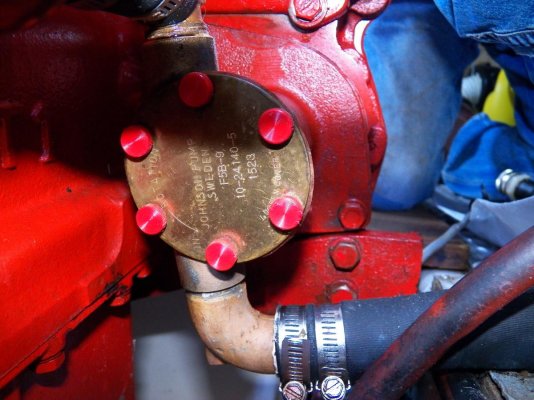Gotta love the Borel alarms. I am going to be putting them in our new boat this winter.
Totally agree. Coming from a sailboat with the engine raw water splashing "noisily" and visibly right beside where I sat steering the boat in the cockpit, and moving to our Nordic Tug 37 where the exhaust water exited the boat a few feet inside the stern and totally underwater (and therefore you could not easily see it, if at all), I added 2 alarms.
I added an Aqualarm flow alarm between the raw water stainer and the pump. This alarm will sound if you forget to open the through hull, something blocks your through hull or strainer, the pump "fails" or malfunctions, or any other reason the water flow is greatly reduced. If nothing else, it could save a person from those "brain farts" where the through hull was left closed and the impeller was destroyed and then the "fun" work of finding all of the missing pieces !

The other alarm I installed was the Borel exhaust hose overheat alarm. As others have alluded to, this is the location where an overheat will first show up, and the Borel will provide early warning to prevent the damage that is often caused before the "regular" or "normal" high temp alarm sounds! Aqualarm makes one too, but the Borel gives an earlier (lower temp) alarm. In my case, the Borel alarm saved my bacon (in a sense). Unknown to me, my exhaust elbow (that I had decided could wait a year before I replaced it after purchasing the boat (14 years old at the time)) had corroded through on the inside (even though on the exterior it looked basically brand new) and was not providing a full "cooling spray" pattern so my exhaust hose had 2 "hot spots". Without this alarm, I could have made a terrible mistake and decided that the elbow could go for a few more years completely unaware of the potential damage this could create. The hot spots, upon my investigation due to the alarm, showed hot enough to eventually delaminate the hose maybe causing an internal blockage resulting in a damaging overheat, or the hose may have developed a leak or large sudden failure and pump hot saltwater into my bilge along with poisonous exhaust gases! Also, due to the elbow being "double jacketed" with the exhaust water injected right up by the turbo, this corrosion could have allowed saltwater to get into the turbo or even the exhaust side of the engine itself causing major (very expensive) problems!

Yes, I describe the worst outcomes, but I wanted to be best equipped to avoid and prevent issues. Both of these alarms and the small panel that sounds and shows the alarm location were very inexpensive as far as "boat expenses" go (around $300 for all). Installation was not difficult but could vary by boat and setup. Very cheap insurance in my opinion, and I highly recommend them.

No affiliation with either company, just a customer.

I had a speed seal on my sailboat and loved it! Very easy to use. Too bad they went out of business.


 No affiliation with either company, just a customer.
No affiliation with either company, just a customer.
